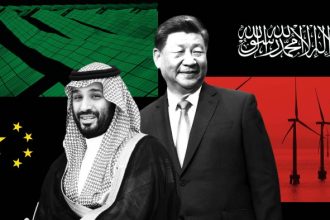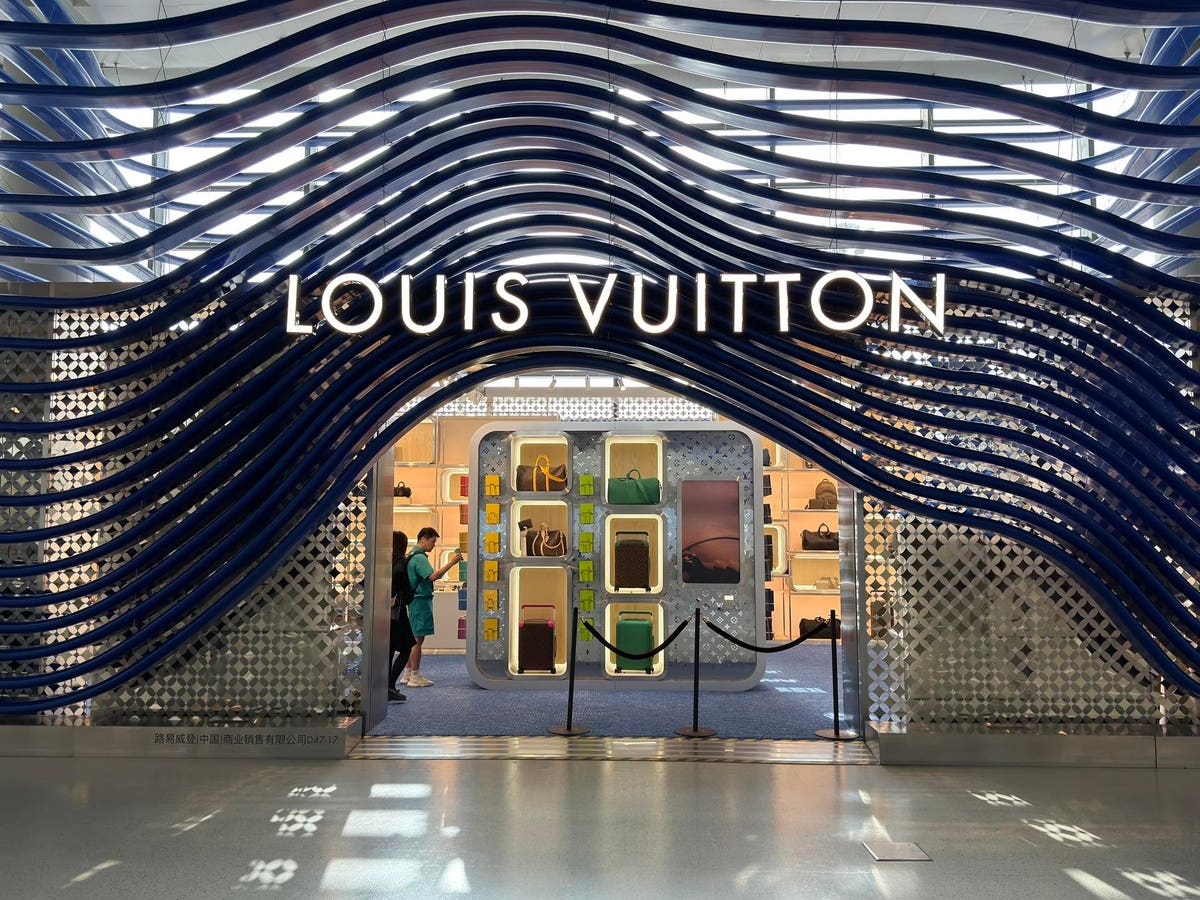Luxury market leader LVMH just delivered disappointing results for the third quarter with organic growth across the group down 3%. Coming off 2023 when revenues rose 14% to $93.4 billion (€86.2 billion), quarterly revenues have sequentially slowed from 3% growth in first quarter and 1% in the second.
Through the third quarter, LVMH has brought in $65.9 billion (€60.8 billion) and things look less and less likely that LVMH is going to pull out of its slump by the end of the year. Most telling is the 5% drop in its Fashion and Leather Goods business (FL&G), the company’s cash cow which accounts for nearly half of group revenues.
“A quarterly decline in the sales of LVMH’s fashion and leather goods division is just too big to ignore,” said ISTUD Professor Balossini Volpe, especially since the segment eked out only a 1% uptick through the first half of the year. The F&LG segment includes such industry-leading fashion brands as Louis Vuitton, Christian Dior, Celine, Loewe, Givenchy, Fendi, Marc Jacobs, Loro Piana and others.
Chief financial officer Jean-Jacques Guiony described results as a “cyclical downturn,” pointing to a 16% pullback in Asia, excluding Japan, its largest market. Yet, the U.S., its second-largest market, flatlined in the third quarter. Together Asia and the U.S. account for 54% of revenues – Asia 29% and U.S. 25%.
As the market share leader, LVMH is a bellwether for what’s happening across the broader personal luxury goods market. And since its FL&G and two leading markets set the pace for LVMH’s group performance, LVMH’s results are an early warning that the luxury market may be headed for a fall, as bad or potentially worse than what happened in the 2008-2009 Great Recession when the personal luxury goods market declined 8%, according to Bain.
“It is now very likely that the personal luxury goods market as a whole will post negative growth in 2024 and likely for 2025 as well,” Balossini Volpe predicted.
Luxury Recession Alarm Bells
“The luxury sector continues to experience recessionary pressures, as we monitor consumer confidence,” TD Cowen reported in an LVMH earnings update, adding it foresees “further demand deterioration, particularly in China.”
In the recession year, LVMH slid by with only a 1% drop in revenues from 2008 to 2009, but it was a very different company back then, less than a quarter of its current size and FL&G accounted for just slightly more than one-third of group revenues. Yet, its FL&G business stayed strong throughout the recession, growing 5% that year.
Now TD Cowen warns, “A decline in the F&LG business is unfortunately uncharted territory. This ‘discretionary recession’ is different in that LVMH is seeming impact across Wines & Spirits, Watches & Jewelry and Fashion & Leather Goods.”
In the third quarter, Wines & Spirits were off 7% and Watches & Jewelry down 4%. And while the company held up Perfumes & Cosmetics and Selective Retailing (Sephora, Le Bon Marché Rive Gauche, La Samartaine) as strong performers, up 3% and 2% respectively in third quarter, both have experienced a sequential slowdown in growth this year, suggesting that a continued pullback may be ahead for these segments too.
Bernstein luxury goods analyst Luca Solca gave a sobering assessment of where LVMH, once the industry’s shining star, stands. “We see LVMH as the weakest among the quality names. We believe Richemont will be better, Hermès will be best.”
China In The Crosshairs
China is a big question mark for the luxury goods market in general and LVMH specifically. The Chinese economy is sputtering and the government is working on a stimulus package to boost the economy.
Guiony tried to put a positive spin on the news out of China during the earnings call. “Against this backdrop, it is not particularly surprising to see softer demand for luxury goods, particularly considering where we were still growing double digit in the second half of last year. However, the strength of Chinese demand in the first half of the year provides recent evidence of the enduring appetite of the Chinese customer for luxury.”
However, the data challenges the claim of “strength” in China in the first half of the year, with Asia, excluding Japan, off -6% in first quarter and -14% in second. And Guiony forthrightly said, “Most of our markets currently face economic challenges, including mainland China.”
TD Cowen is alarmed by the “marked deceleration in the business among Chinese consumers.” It figures that China accounted for upwards of 50% of the company’s growth pre-Covid. And the F&LG segment is particularly dependent on China, with TD Cowen estimating Asia, excluding Japan, makes up about 40% of revenues in that segment with “a majority of that mix based in Greater China.”
Mainland China and Asia combined were the world’s leading personal luxury goods market last year – $61 billion in China and $60 billion in Asia, according to Bain. Continued weakness there could have a profound impact on LVMH and the personal luxury goods market overall.
“Slowing Chinese growth has a cascading effect across the entire globe,” Nick Marro, a Hong Kong-based lead analyst for global trade with the Economist Intelligence Unit (EIU) shared with South China Morning Post. “The prolonged period of demand weakness that we’ve seen in China has already been acting as a net drag on global activity.”
Weakening Fashion And Leather Goods
As troubling as China is right now, LVMH’s results in fashion and leather goods may be more significant for the company and what it signals for the luxury market at large.
Leather goods ($88 billion), apparel ($81 billion) and shoes ($30 billion) made up 53% of the personal luxury market combined in 2023 and a sizeable share of the market’s overall 4% growth last year was credited to price increases, rather than demand growth.
While it’s hard to get a fix on exactly how much Louis Vuitton handbag prices have increased, Reuters reported last year that prices could increase by as much as 20% in China and Pursebop estimated prices in the U.S. and Europe rose in the 7% range last year.
Nonetheless, Guiony defended the company’s price hikes. “All the players have done the same, all players. And I’d say that with this in mind, do you really think that if we had not increased prices the way we’ve done, we would be faring double-digit today? I really don’t think so.”
Yet 14% growth in F&LD last year went to -5% in the third quarter. Yes, this year F&LG was up against high comparables from last year, but in third quarter 2023, they weren’t nearly as high as they had been in the first half 2023, 20% versus 9% in third quarter 2023. So the F&LG slowdown was already taking hold in the second half of last year.
“When customers realize that the same bag doubled in price in less than five years with no explanation but greed, and at the same time, they hear about subcontractors using underpaid illegal workers, they feel angry and fooled. Their sense of trust is broken,” observed Balossini Volpe.
Guiony said that the current decline in the F&LG segment is “more demand-driven than offer-driven.” However, to Balossini Volpe’s point, luxury consumers’ demand can be cooled by a lack of trust and what they perceive as an unjustified offer.
Going forward, Guiony indicated the company sees no reason for changing course, rather it will continue to do what it does best: Luxury.
“The offer in Luxury has been the key strength over the years. I’m not saying that we neglect the pressure that we get from demand, but not necessarily with a view to change entirely the offer with a very short-term view. We still keep on the idea that we should stay faithful to what has been the recipe of our success over the years,” he said.
Doubling Down
Despite the downward turn in business, Guiony emphatically stated, “We don’t intend to change our strategy.” Instead the company will double-down on innovation to overcome what he sees as part of a normal business cycle.
One of the past quarter’s successful innovations called out in the earnings call is the Neverfull Inside Out bag, launched in partnership with actress Sophie Turner.
However, it’s really no innovation at all because fashionistas have known for years that by turning the Neverfull tote bag inside out, they could stand out among the crowds carrying the ubiquitous handbag with the logo side out. LVMH did not provide a comment or a picture of the Neverfull Inside Out bag to illustrate this story, but you can see it displayed here.
Whether the luxury market is simply going through the down phase of a normal business cycle or on the precipice of a much deeper trough, LVMH needs more significant innovations in its quiver.
“So our business, as I said many times, is not to forecast our business but to adapt, and this is what we are trying to do,” Guiony concludes. “We’ve been through ups and downs. The only thing we know that when the business is bad, usually, it’s good thereafter.”
See also:
Read the full article here





